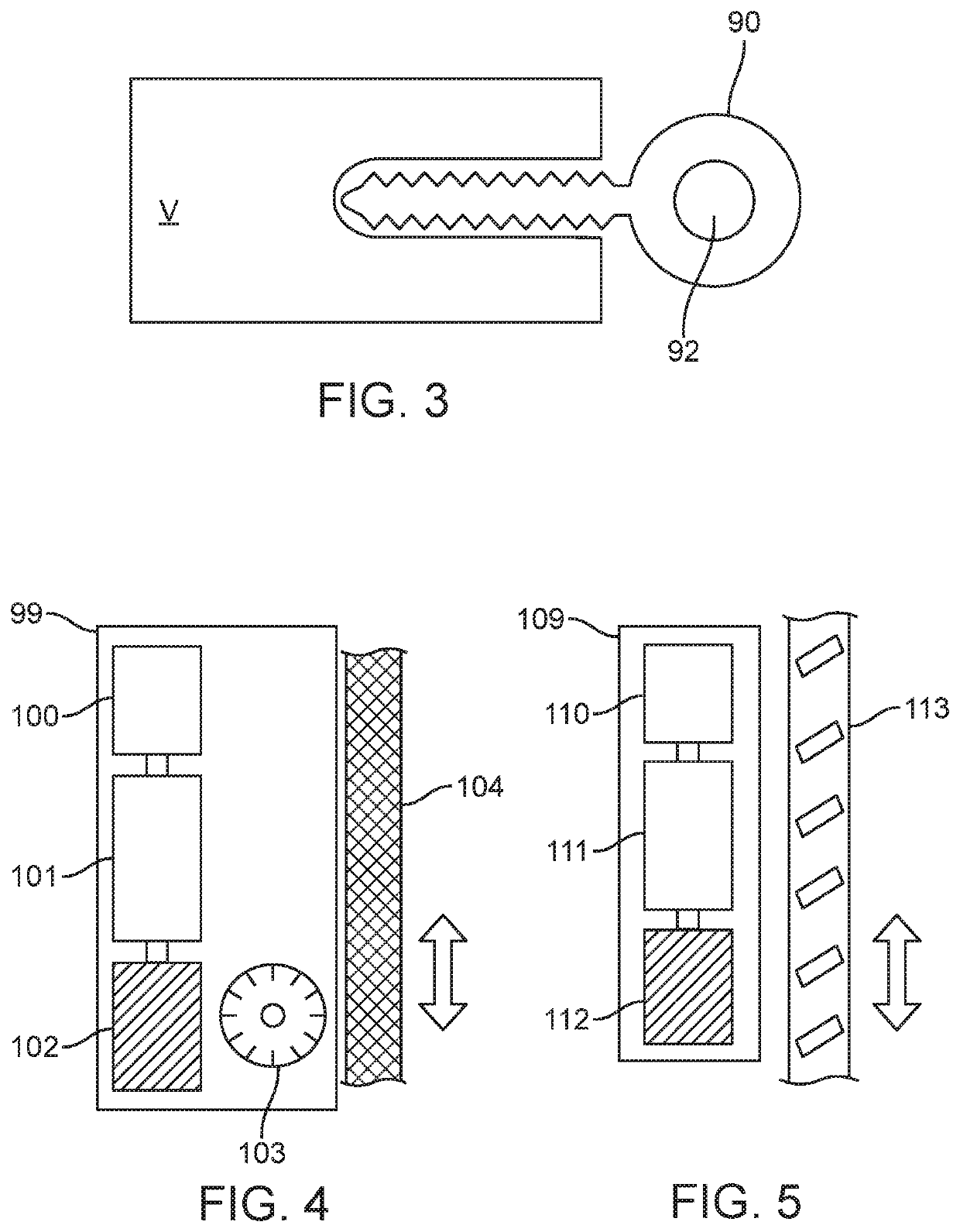Spinal curvature modulation systems and methods
a curvature and spinal technology, applied in the field of spinal curvature modulation systems and methods, can solve the problems of actual creation of noticeable deformation, rapid and severe curve progress, and difficulty in removing rods and associated hardware in subsequent surgery
- Summary
- Abstract
- Description
- Claims
- Application Information
AI Technical Summary
Benefits of technology
Problems solved by technology
Method used
Image
Examples
Embodiment Construction
[0052]Embodiments described herein are directed to spinal curvature modulation systems, methods and related devices and instrumentation. In general and as described in greater detail below, embodiments of described systems include a flexible tether, a tether tensioning unit and bone anchors for the flexible tether that allow the tether to be secured across multiple vertebrae in a region of treatment. Tension in the flexible tether is adjustable transcutaneously with remote devices or with an elongate tool requiring only a small access incision, typically about 2 cm or less. Embodiments described thus allow for multiple adjustments of tether tension, and spinal curvature, over time without repeated, highly invasive, spinal surgeries.
[0053]FIG. 1A shows a spine with a given angular deformity with angle alpha. With a lateral approach, screws can be placed into the vertebrae on the convex side of the curve, above and below the apex. Threaded through the screws is a flexible tether. This...
PUM
 Login to View More
Login to View More Abstract
Description
Claims
Application Information
 Login to View More
Login to View More - R&D
- Intellectual Property
- Life Sciences
- Materials
- Tech Scout
- Unparalleled Data Quality
- Higher Quality Content
- 60% Fewer Hallucinations
Browse by: Latest US Patents, China's latest patents, Technical Efficacy Thesaurus, Application Domain, Technology Topic, Popular Technical Reports.
© 2025 PatSnap. All rights reserved.Legal|Privacy policy|Modern Slavery Act Transparency Statement|Sitemap|About US| Contact US: help@patsnap.com



